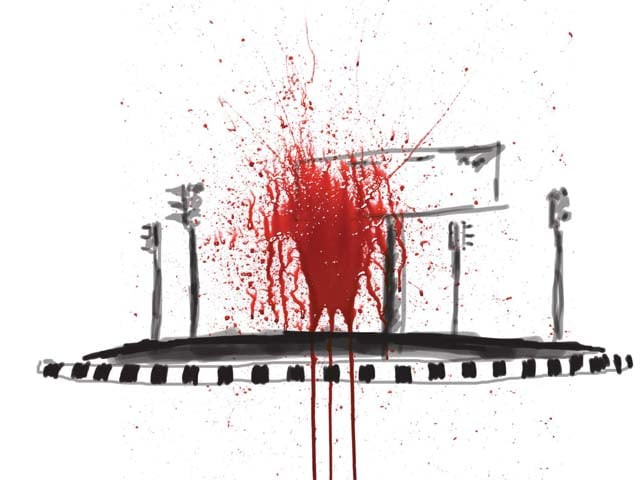Notorious ‘Bloody Square’ springs back to life
Residents still scarred by memories of the reign terror.

Originally known as Grain Chowk because the square in the centre of Mingora was once a thriving commodity market. Yet during Taliban rule, it earned a malevolent reputation after it became the militants’ favourite site for carrying out executions: this was where they strung up corpses of the executed people from poles in the middle of the square.
People in Mingora would often awaken to the sight of a mutilated corpse hung from a post, usually with an accompanying warning note pinned to the body. The square has since been renamed Shaheed Farooq Khan Chowk, after a police inspector who was executed by the Taliban.
The sights and sounds of the square today are a far cry from the silent terror that this former tourist destination suffered under the hard-line militant rule.
The buildings around the square are covered with advertisements for technical education, tuitions services for schoolchildren, cell phone connections and even broadband internet. No wonder residents are hesitant to even talk about those dark days.
“Don’t remind us of that bleak time,” says Amroz, a shopkeeper whose store is adjacent to the square. “Two or three beheaded bodies would await us every morning. Barbarism ruled here.”
Yet there are also incidents that are indelibly etched into the memories of many residents. Amroz says that of the 23 corpses he personally saw, one remains unforgettable.
“It was raining heavily that morning when I came to open my shop,” he said.
“A bearded and very graceful looking man was hanging upside down, his head on his buttocks and a currency note in his nostril, and a threatening letter on his chest saying: ‘Nobody is allowed to touch this body or remove from this place before 11 am. If anybody does so, they will suffer a similar fate’.
“The eyes of that man were pleading for the dignity of burial, but none of us dared to remove him from that place.”
Yet it was not just the bloodshed that caused the residents of Swat misery. The Taliban would frequently shut down the markets, decimating the shopkeepers’ revenues.
“There was no business at all,” said Shamshul Qamar, a fruit vendor. “We opened our shops for an hour then would have to close for two days because the threat of robbery was so high. We almost went bankrupt.”
The Taliban would also frequently resort to extortion, particularly from the more prosperous residents of Mingora.
“One day I received a letter from the militants demanding Rs100,000 and a threat to blow up my shop if I failed to pay,” said Asim, the owner of a lighting store.
Asim says that the violence and bloodshed has exacted a heavy psychological toll on the population, while the Taliban’s extortion and anarchic tyranny damaged the economy badly, driving many to the verge of bankruptcy.
The residents of Swat seem to have become particularly immune to protestations of piety and frequently mock the Taliban’s claims to represent their faith. Qamar, the fruit vendor, referred to the militants as “purveyors of their own Shariah”.
Others simply seem amazed at the utter brutality of men who claimed to act in the name of God.
“Even the sky would weep those days when they slaughtered innocent people. But it is so strange that those people neither took pity nor felt the fear of God,” said Asim
Published in The Express Tribune, February 14th, 2011.













COMMENTS
Comments are moderated and generally will be posted if they are on-topic and not abusive.
For more information, please see our Comments FAQ